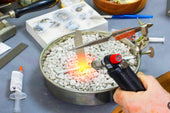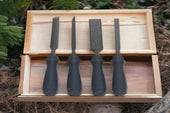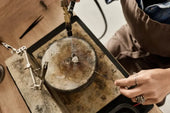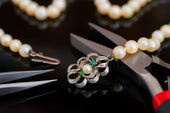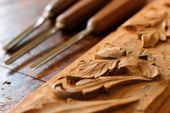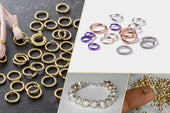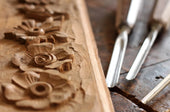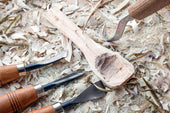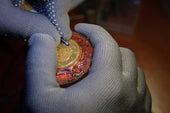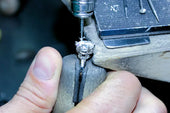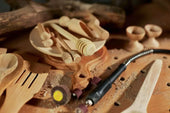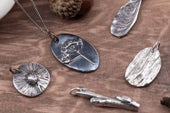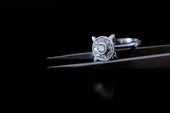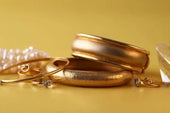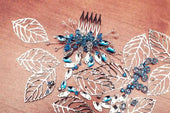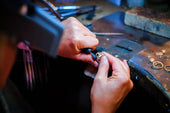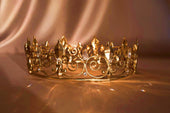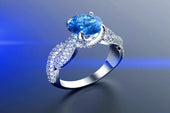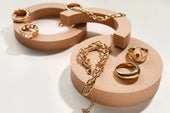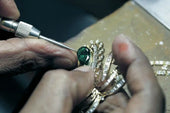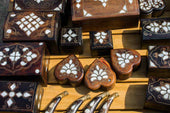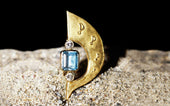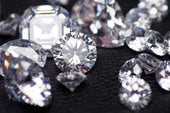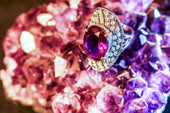When jewelry is in its raw stone state, it is dull and no one notices her beauty. Only after a specific process can a beautiful gem slowly blossom into a dazzling light, and that process is the jewelry cutting process. The cutting and shaping process is essential behind every dazzling gemstone. Jewelry cutting techniques, also known as gemstone cutting, enhance the brilliance, color and value of gemstones through the use of specialized engraving tools and professional cutting techniques. It is only after the cut is complete that the gemstone is used in a variety of jewelry designs, so carvers need to understand this technique. In this article, we will explore a few of the most common jewelry cutting techniques.
Curved Faceted Cut
Also known as the cabochon cut, a gemstone needs to have at least one curved surface in order to utilize this technique. It is mainly applied to jade and some single-crystal gemstones, such as agate, turquoise, opal and cat's eye. Curved faceted gemstones are mostly found in their raw state in a spherical shape, such as a semicircular spherical facet or a concave circular shape in the center. Instead of faceting the gemstone, this technique sculpts a smooth, rounded surface and a flat bottom that accentuates its color and texture. This is one of the most popular cuts because of its simplicity and ability to show off the natural beauty of the gemstone, making it ideal for those who prefer purely natural stones.

Round Diamond Cut
The round cut is mainly used for diamonds, and according to scientific studies this technique has a standard number of 57 facets in a gemstone, which is the cut needed to achieve the ideal shape of a diamond. The engraver needs to follow the exacting engraving data to make the cut. During the carving process, the round diamond shape cut is 58% of the diamond's diameter in height, 43% as a percentage of the table, 14% as a percentage of the depth, and 58% as the diamond's critical dimension. This cut provides a reflective optical effect that makes the diamond dazzle in the light.

Pear cut
This is a hybrid cut that produces a gemstone shaped like a crystal clear teardrop. The pear cut is varied according to the optical characteristics of each gemstone type. During the process, the aspect ratio of the carving is maintained at 1.5:1 for the best appearance, and the finished pear-shaped stone is often used for pendants and earrings. The unique facets allow it to sparkle as it moves, and the stone will reflect delicate and elegant light in different directions, making it perfect for dangling or swinging jewelry.

Bead Cut
Bead cutting is the cutting of gemstones into small spherical or round beads, and is mainly applied to materials such as pearls, jade and coral. Gemstones cut into bead shapes are usually drilled in the center and strung together to create a necklace or bracelet. The process mainly involves holding the carved gemstones in place using props, followed by catching a stereo microscope, locating where the holes need to be drilled, and piercing the holes using a drilling machine. This technique allows for the carving of highly polished beads or rustic natural bead surfaces depending on the desired aesthetic.

Oval cut
The oval cut is often used for brightly colored gemstones such as amethyst, crystals and garnet. The standard facet for an oval cut stone is 69, which gives the stone an oval appearance. In order to get the best looking shape, it is important to keep the aspect ratio of the carving at 2:1. A well-cut oval gemstone can emit the same brilliant colorful light as a cut round diamond. Many people will prefer oval shaped crystal gemstones due to their cost-effectiveness.
Heart Cut
A heart cut gemstone has a standard facet count of 63 and needs to be cut to standard proportions. Cut out the symmetrical two winged petals, the notch in the center, and the pointed corner at the bottom. The aspect ratio for optimal appearance is 1:1 and the optimal depth-depth ratio is between 59% and 63%. Heart cut gemstones are the ultimate symbol of love and are the perfect gift for many couples to give their partners.

Free Cutting
Free-cut enables the carver to give free rein to his or her imagination. In this method, the stone is shaped according to its natural contours, resulting in a unique and unconventional design. It is often applied to large colored gemstones such as agate, jasper and tourmaline. Choosing a free-form cutting technique brings out the individuality of each gemstone, making it ideal for custom and artistic jewelry designs.

The importance of choosing a correct cut
The cut of a gemstone plays a crucial role in its final appearance. It determines how light interacts with the gemstone, affecting its brightness, color intensity and overall appeal. When choosing a cut, it is important to carefully consider factors such as the type of gemstone, its clarity, and its intended use in jewelry.
Conclusion
Each gemstone has its own unique optical properties. Getting a gemstone to shine perfectly requires the carver to use a stereo microscope to carefully observe the stone's color, acceptable imperfections, and good luster. Then, based on its characteristics, he or she chooses the cut that best suits the gemstone. Several common jewelry carving techniques listed in this article are suitable for most gemstones, and the carver will need to understand the article carefully to combine the natural gesture of the gemstone with the craftsman's skill to make each gemstone radiate a more brilliant luster.


